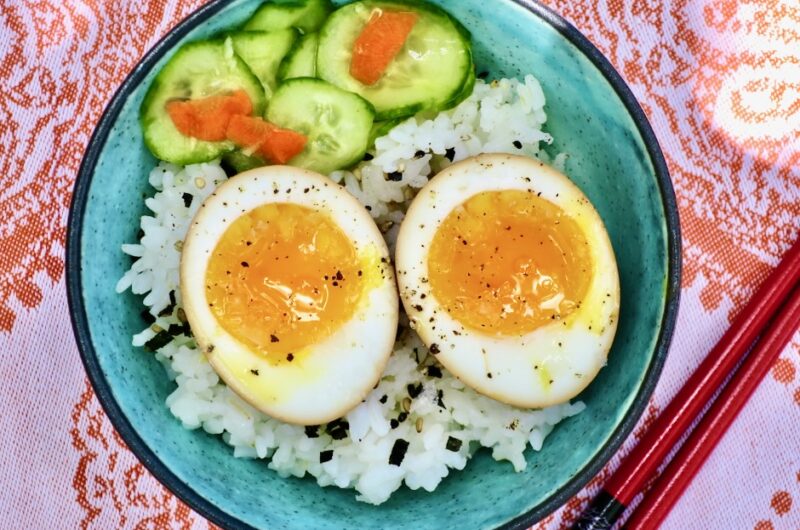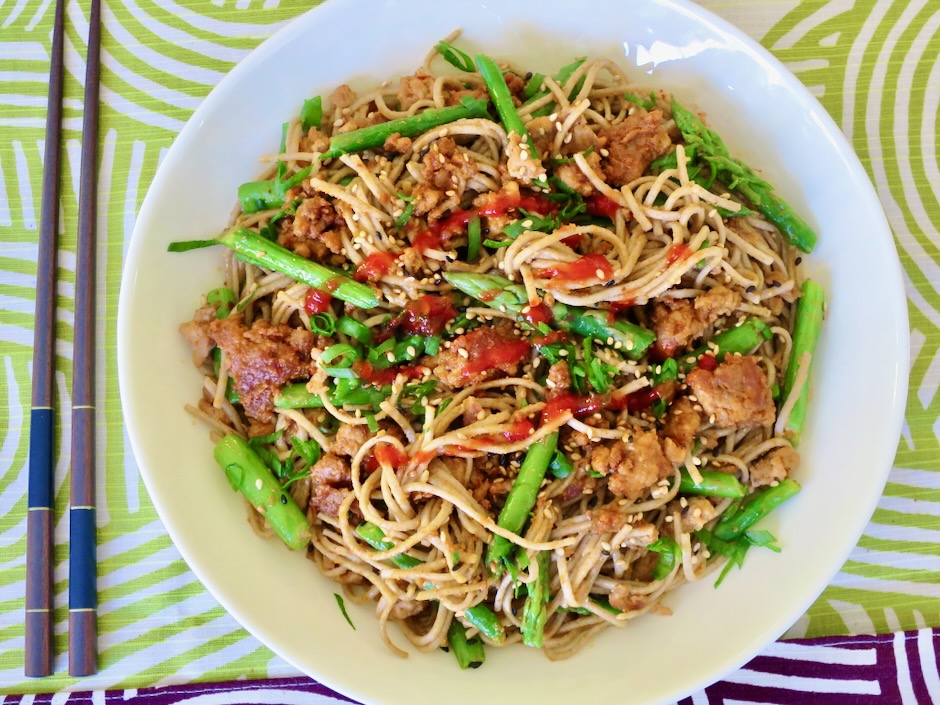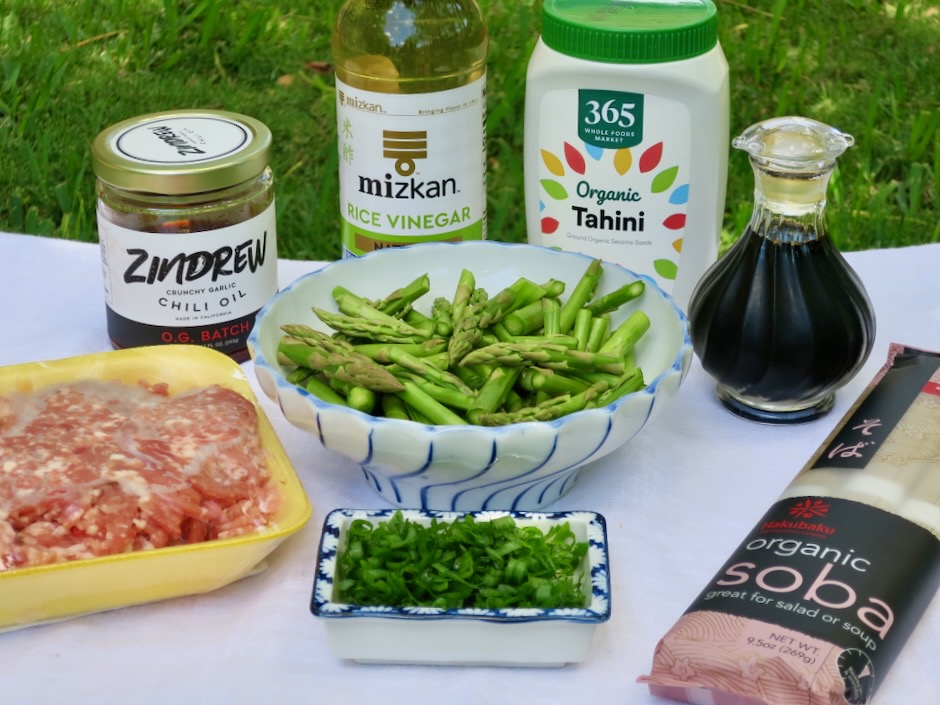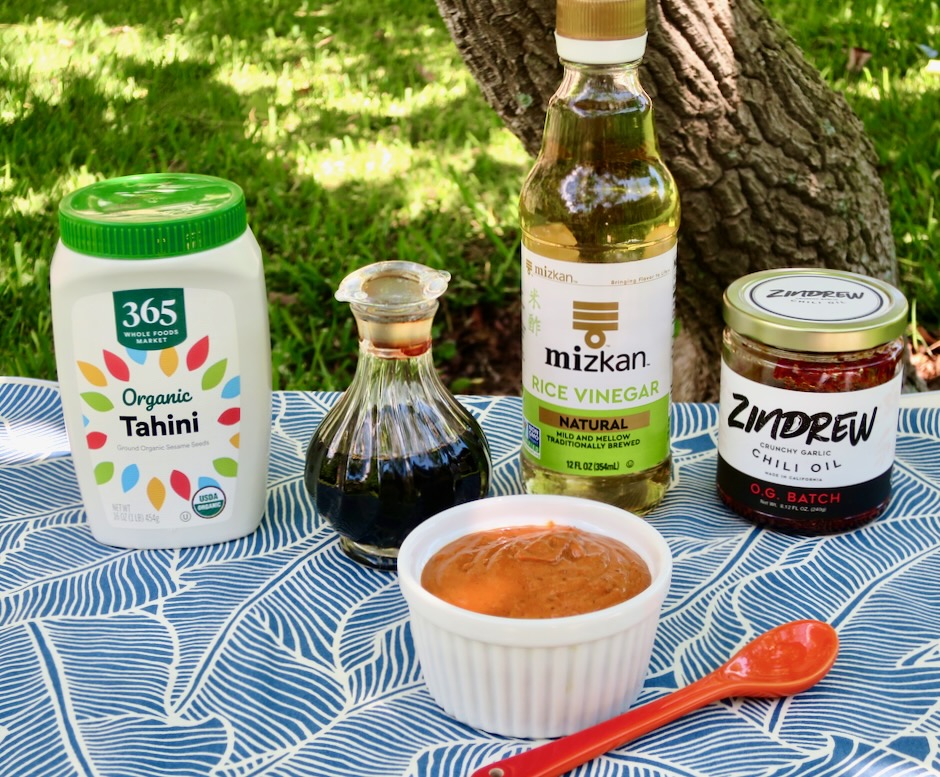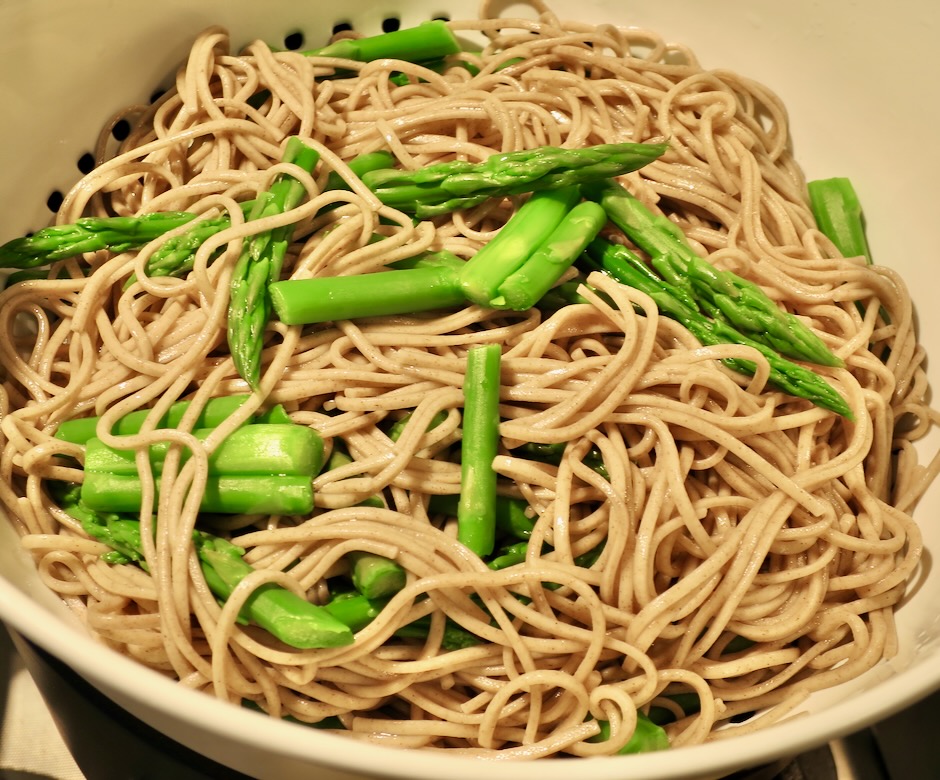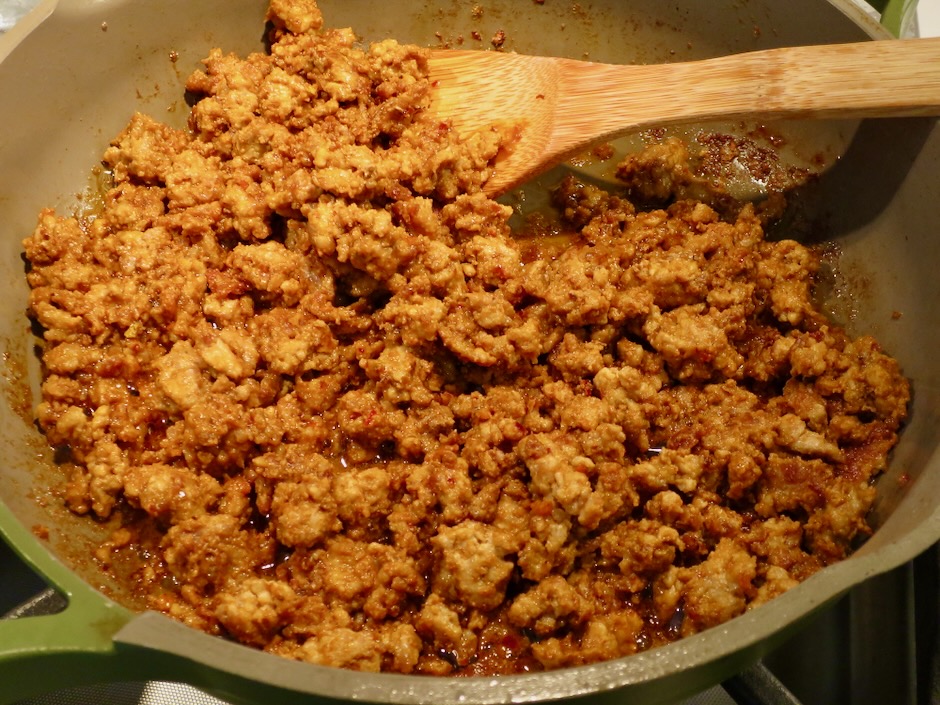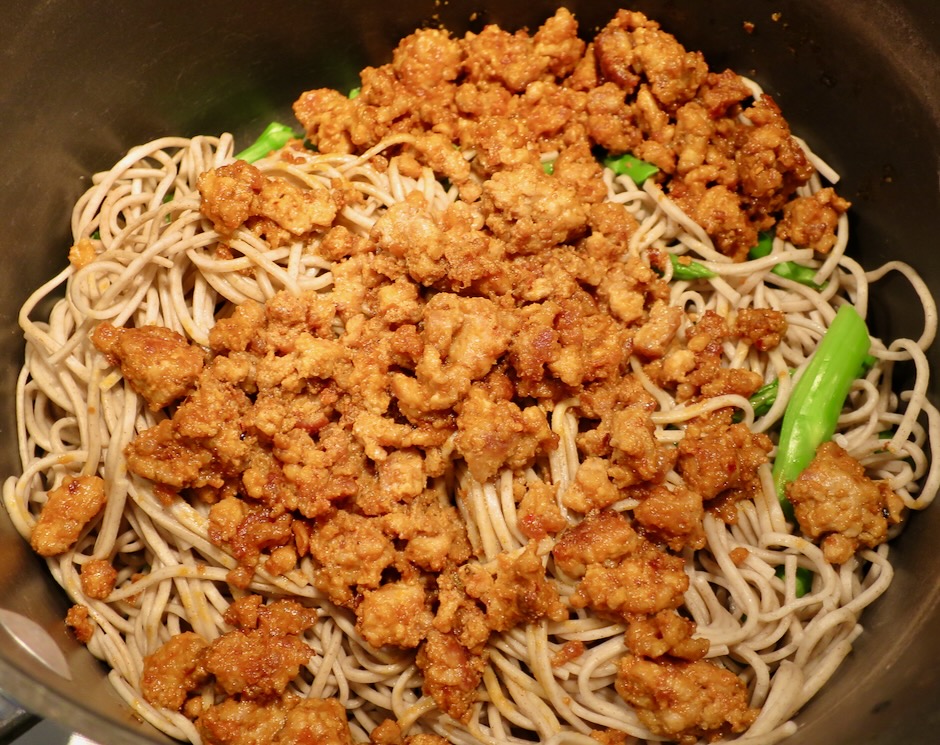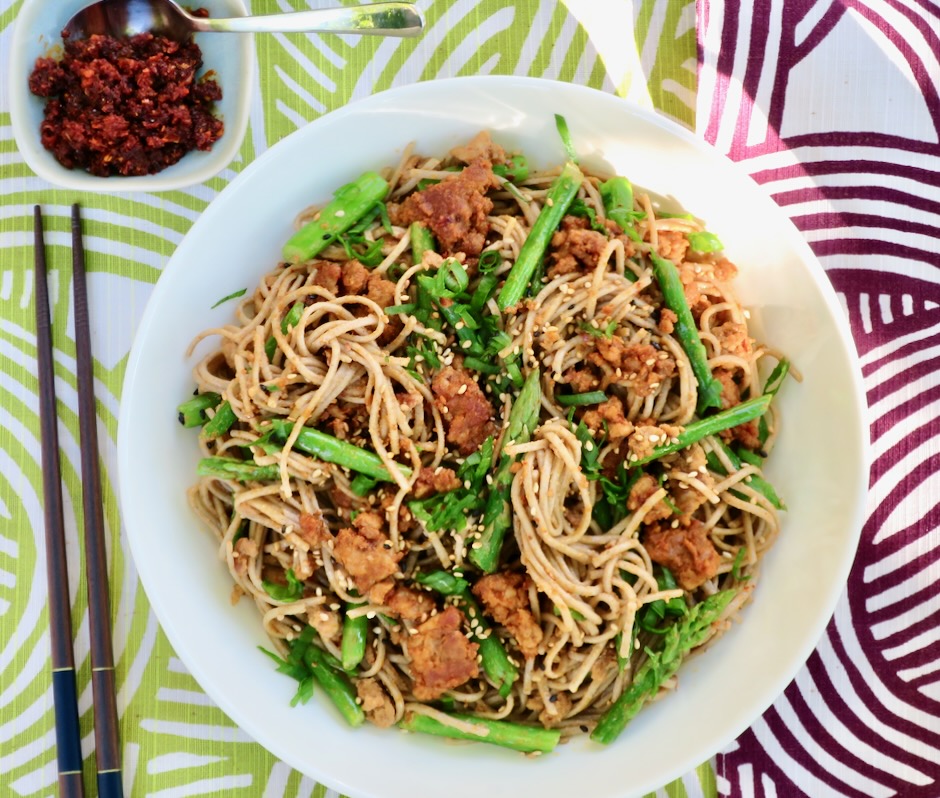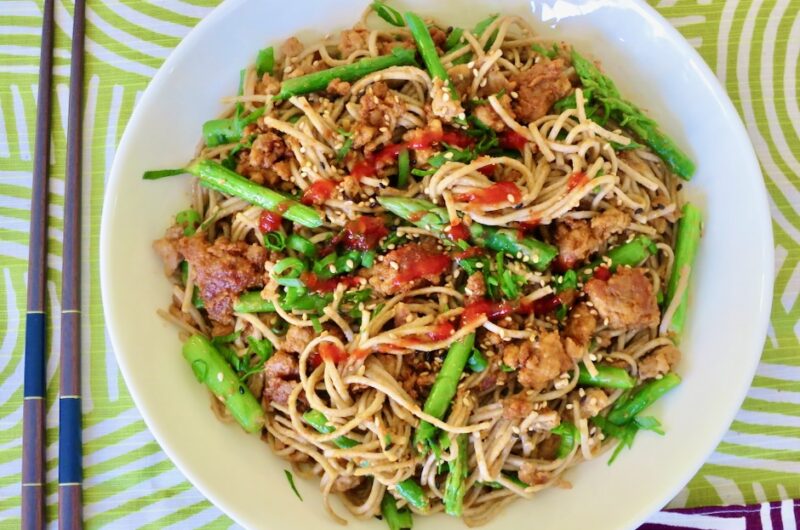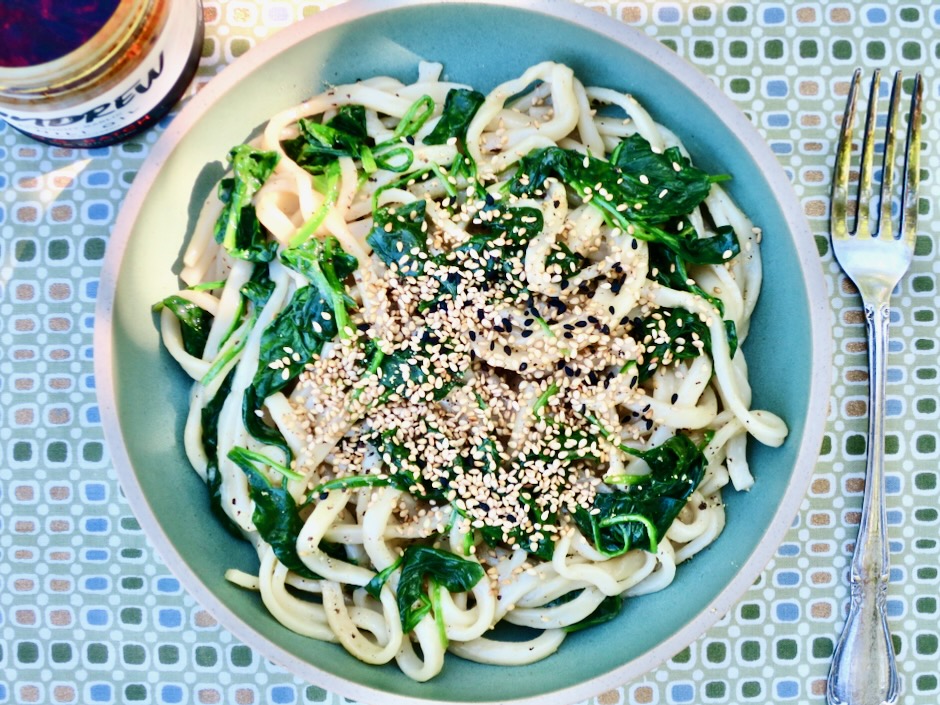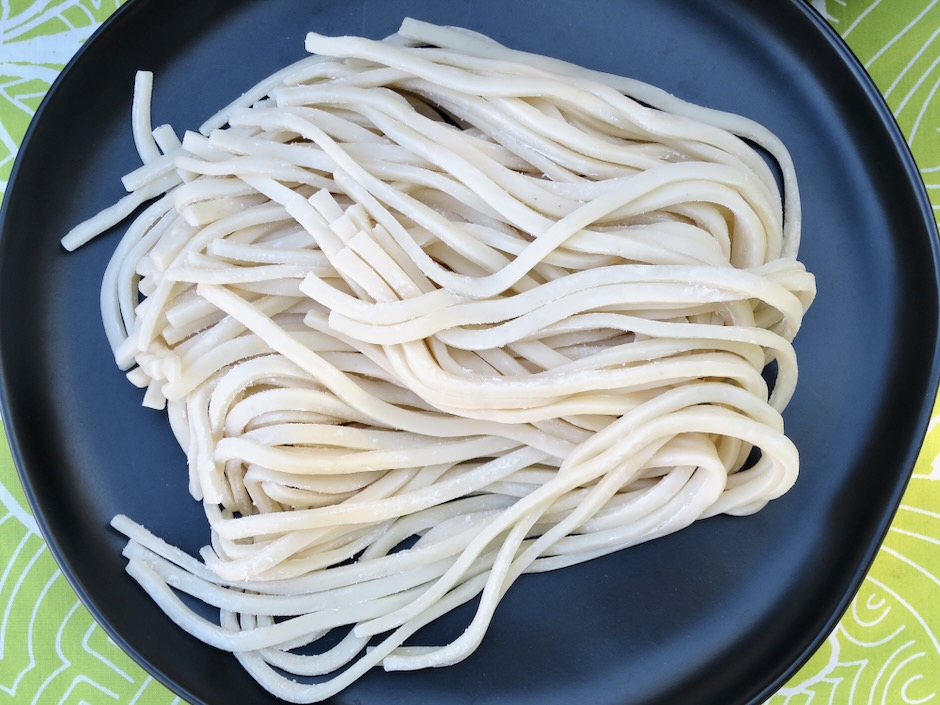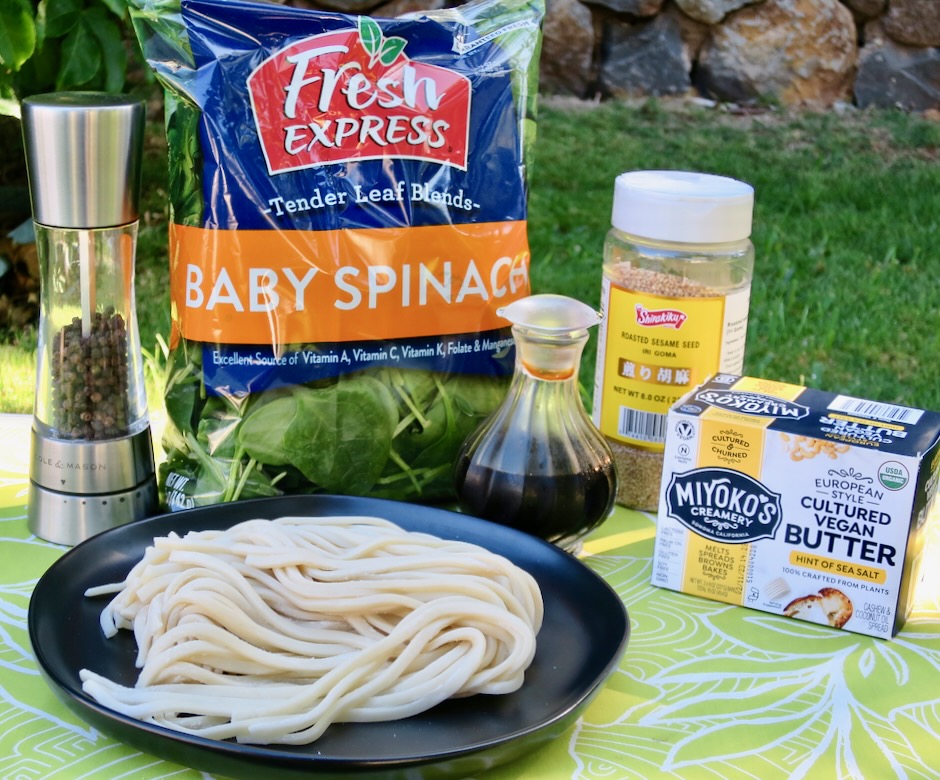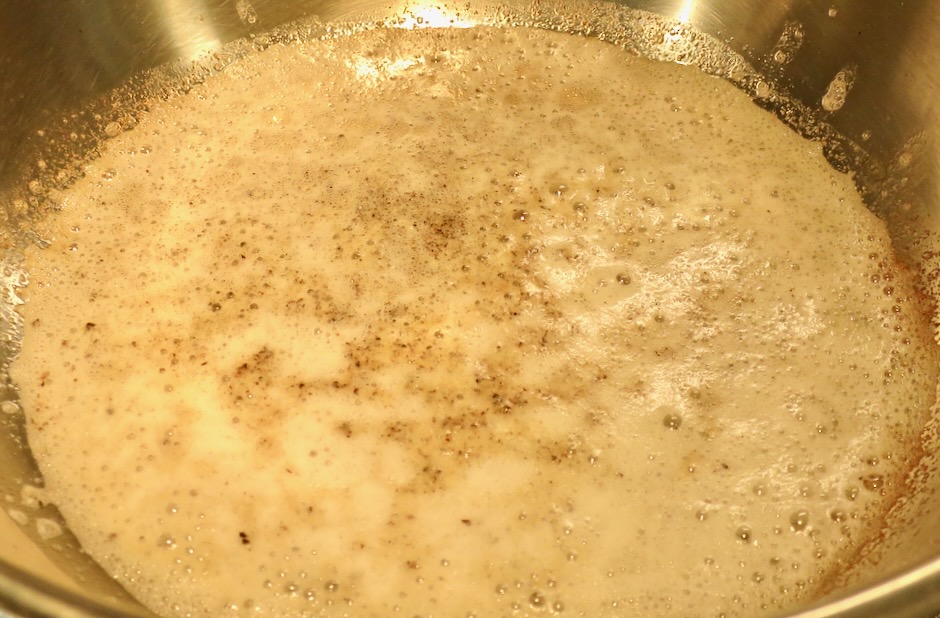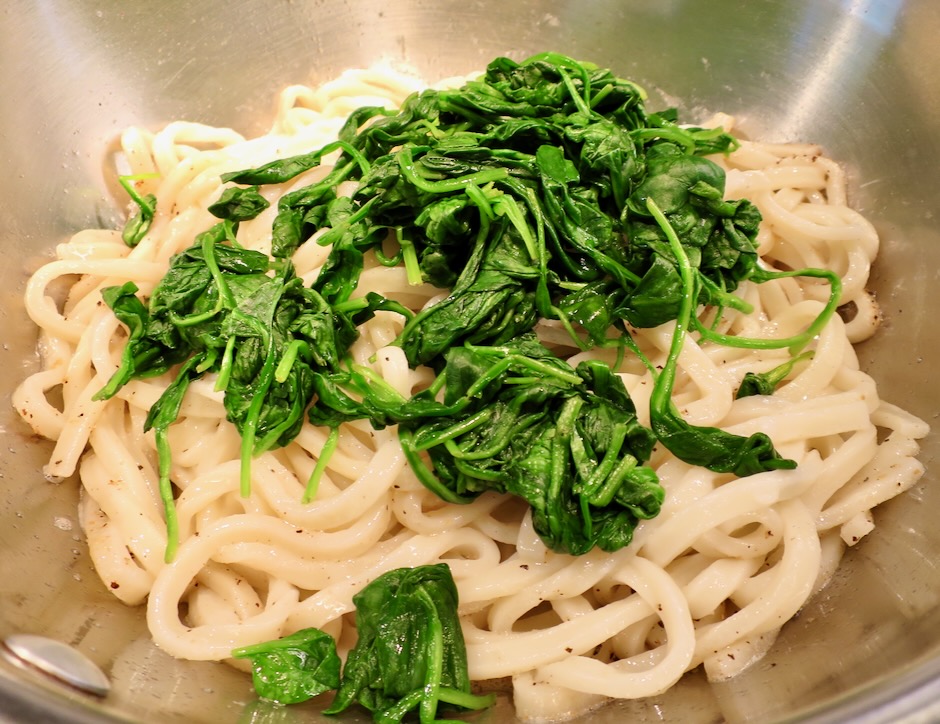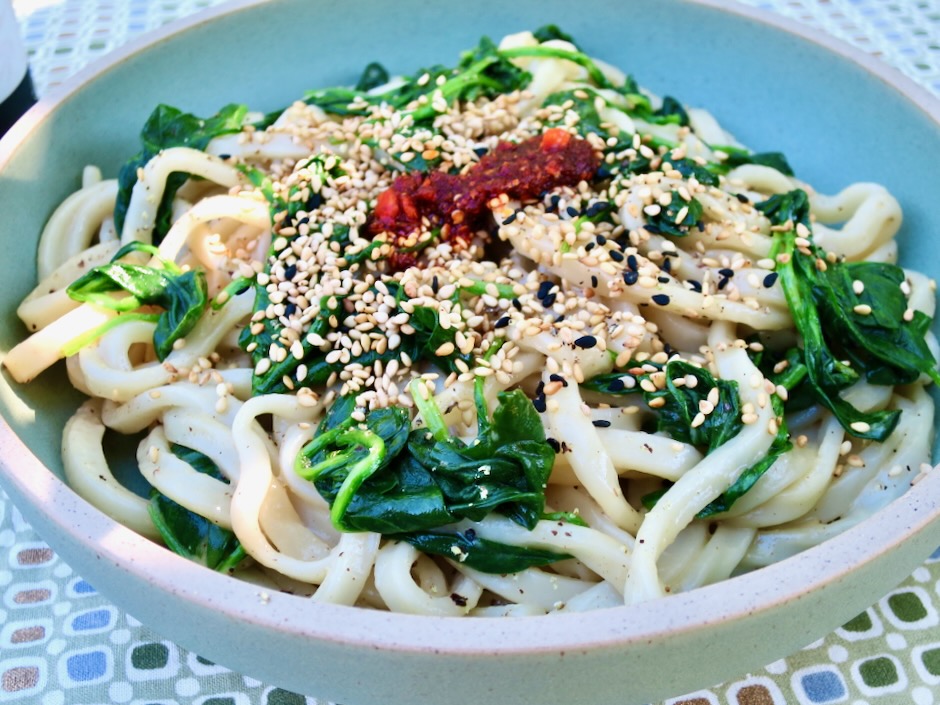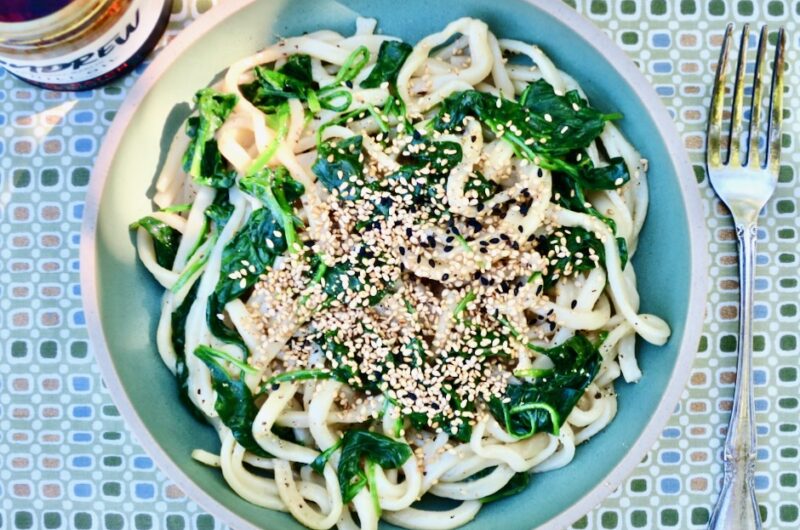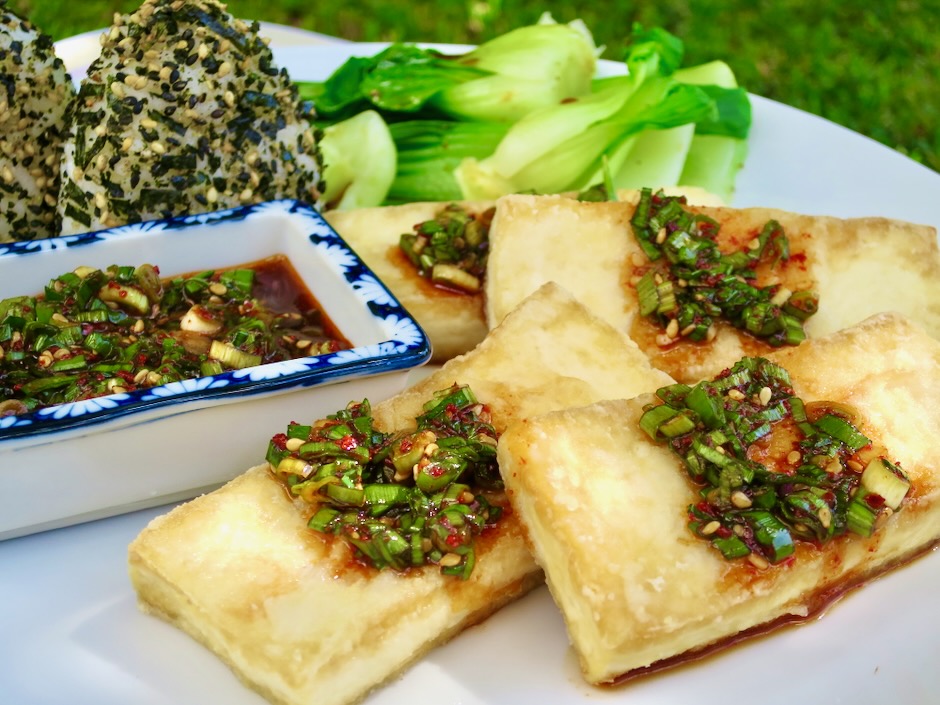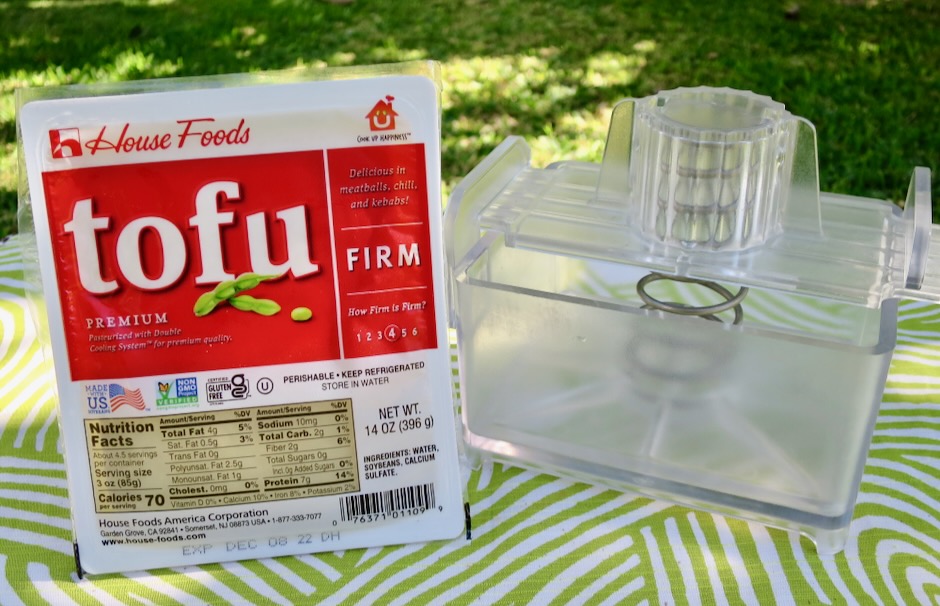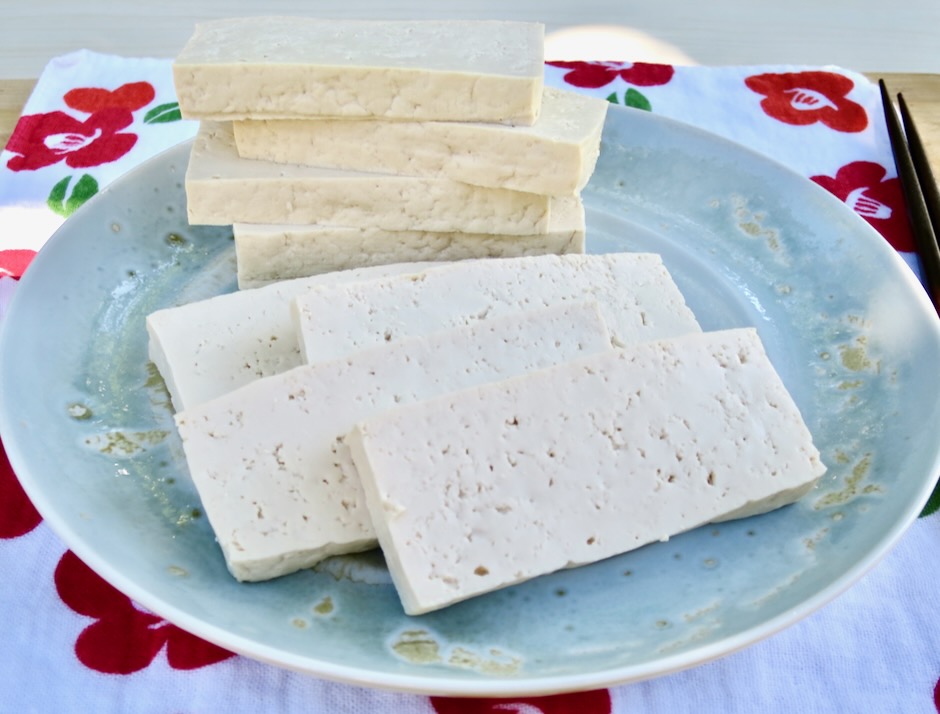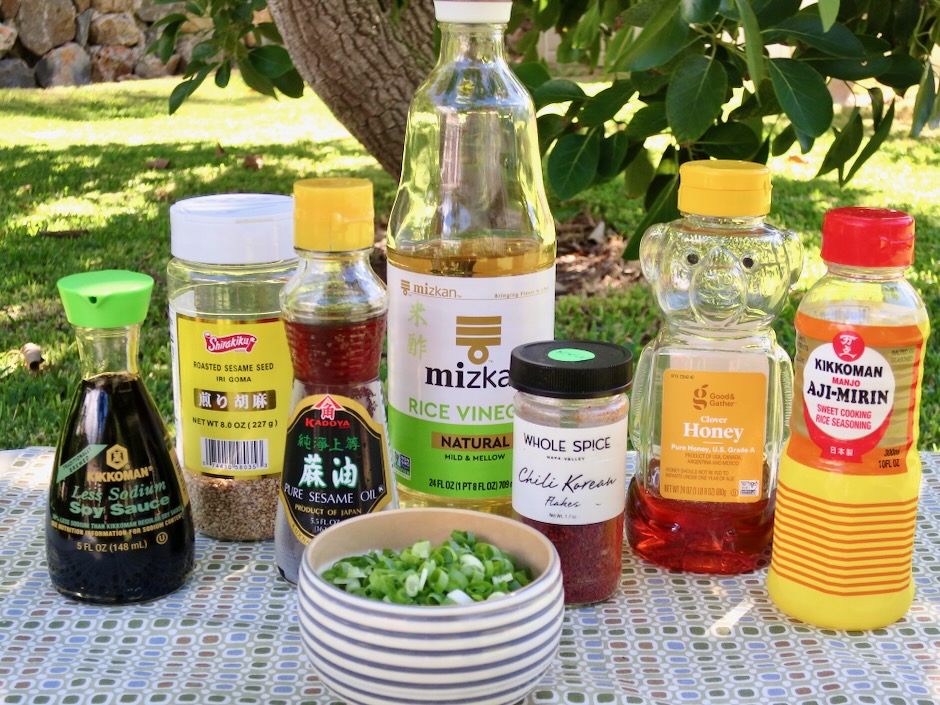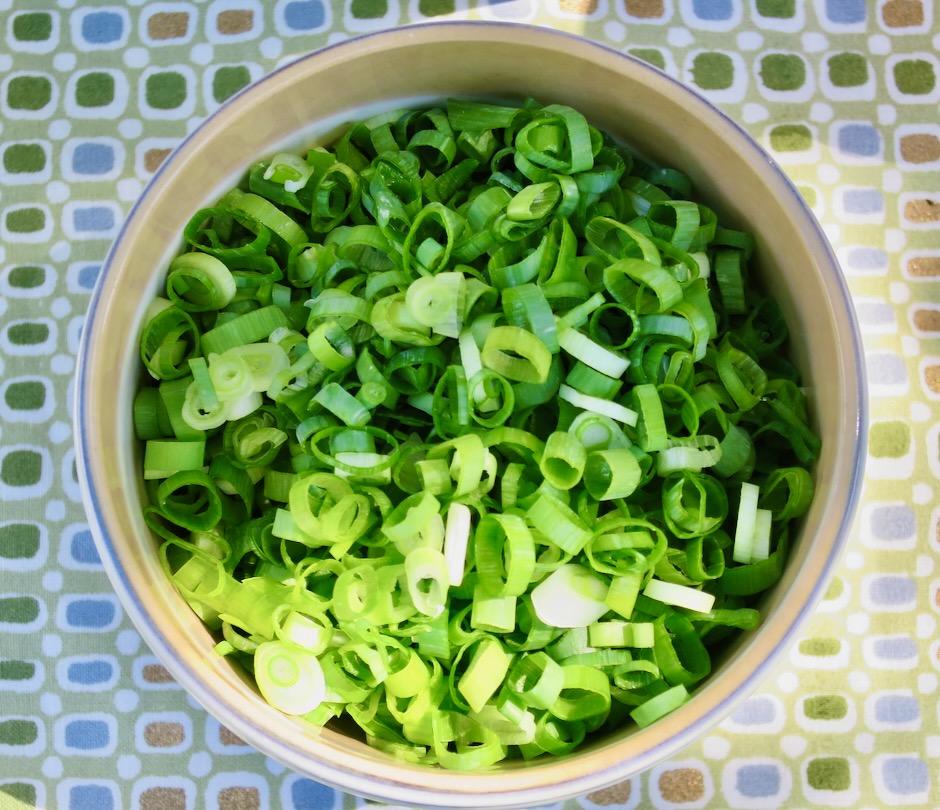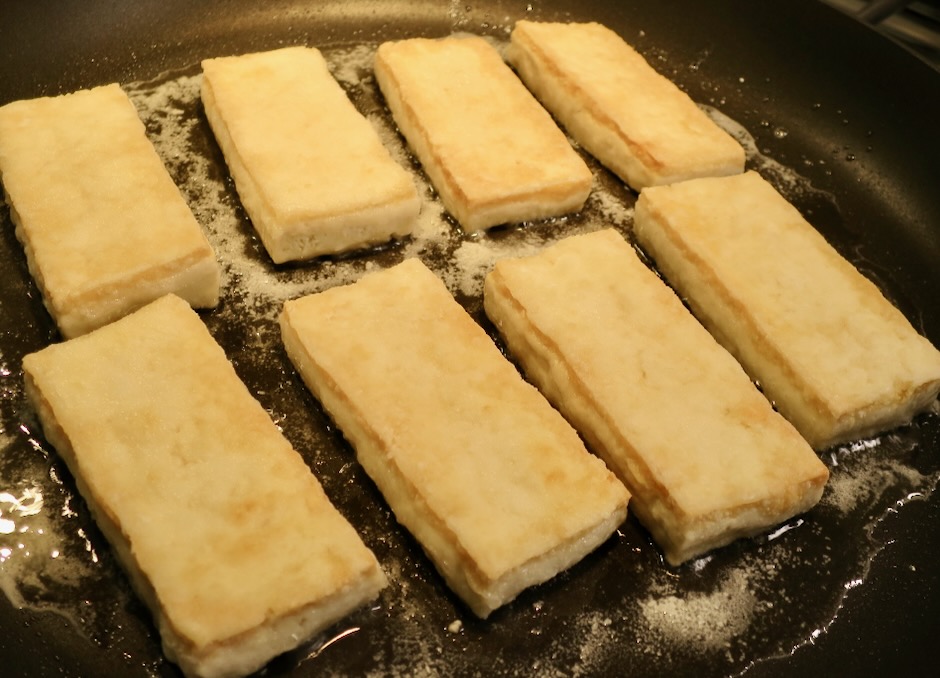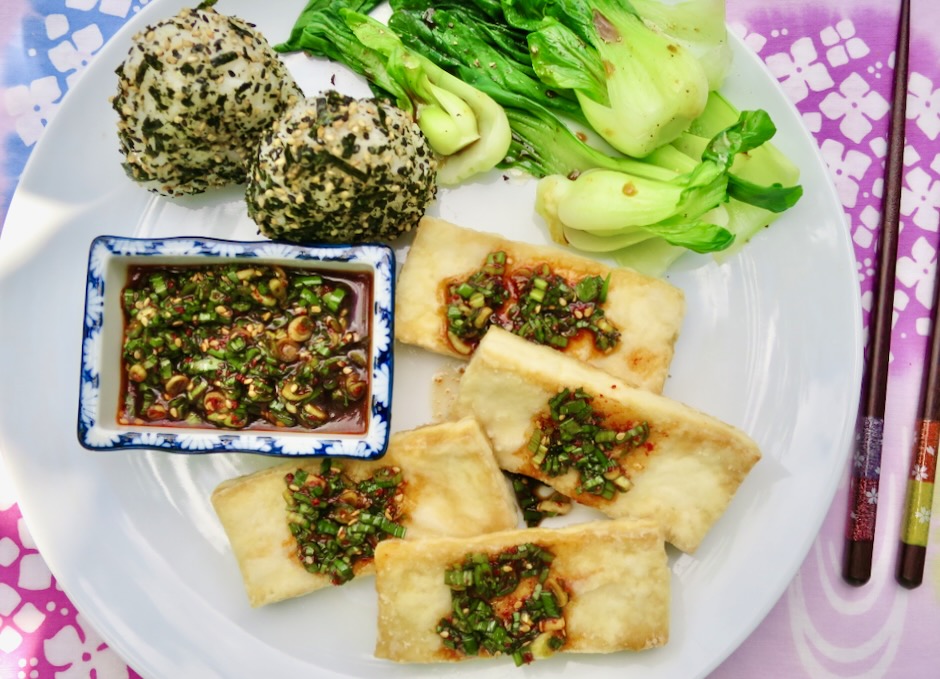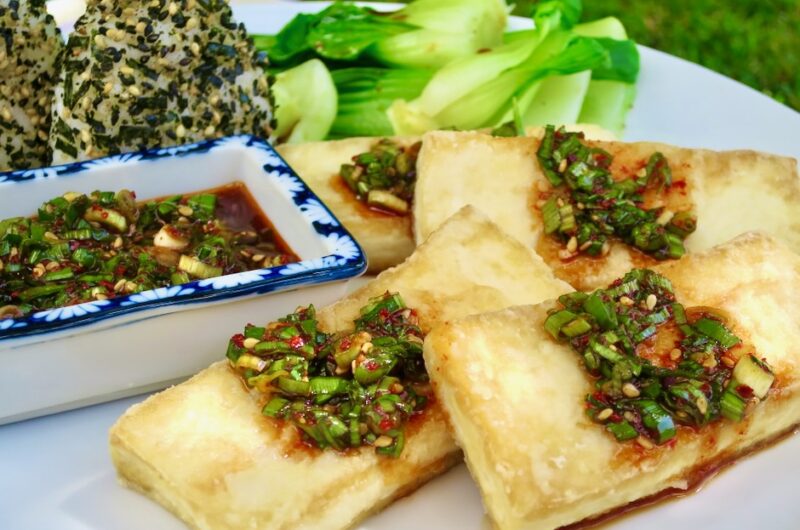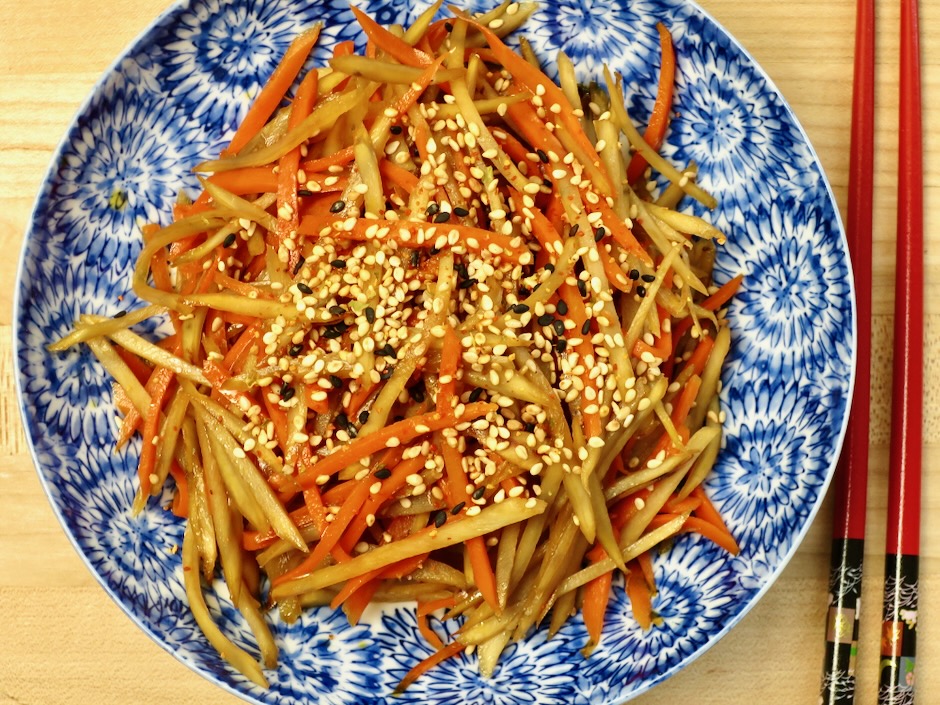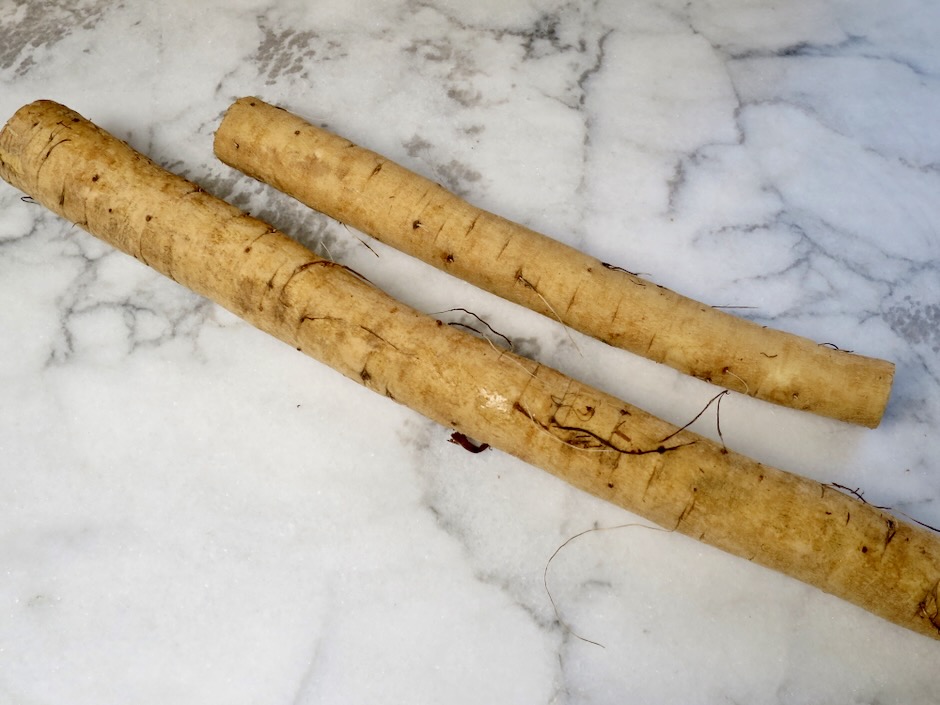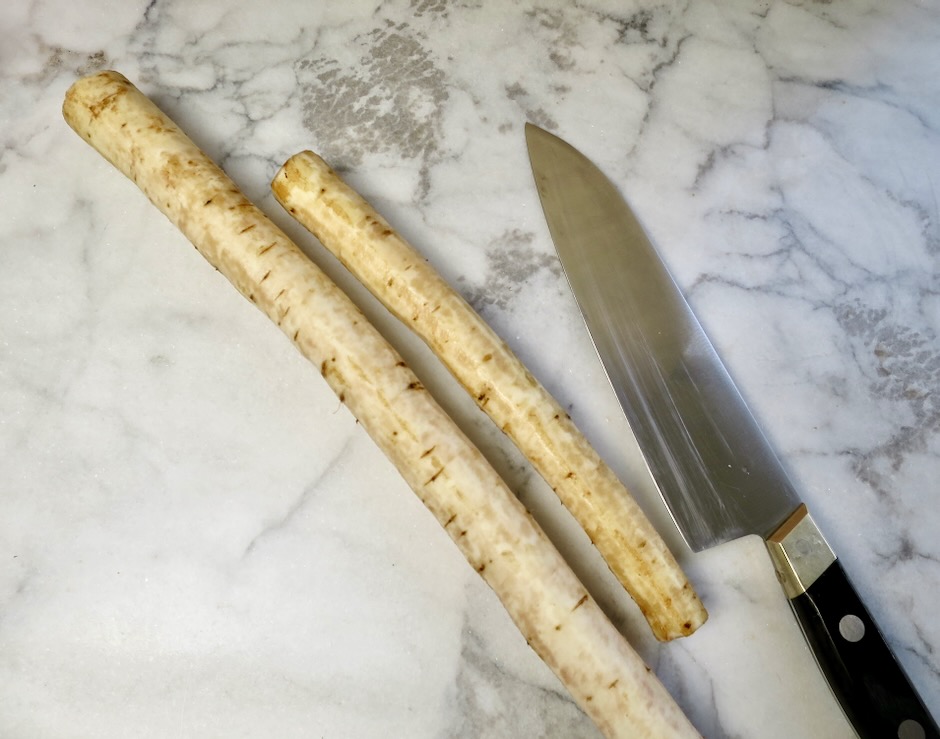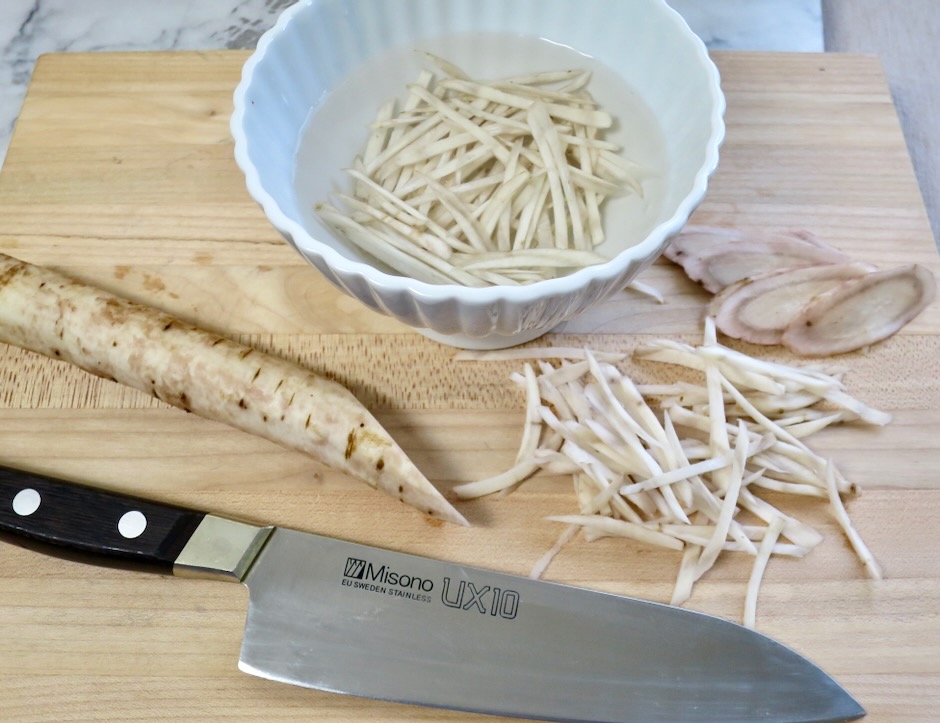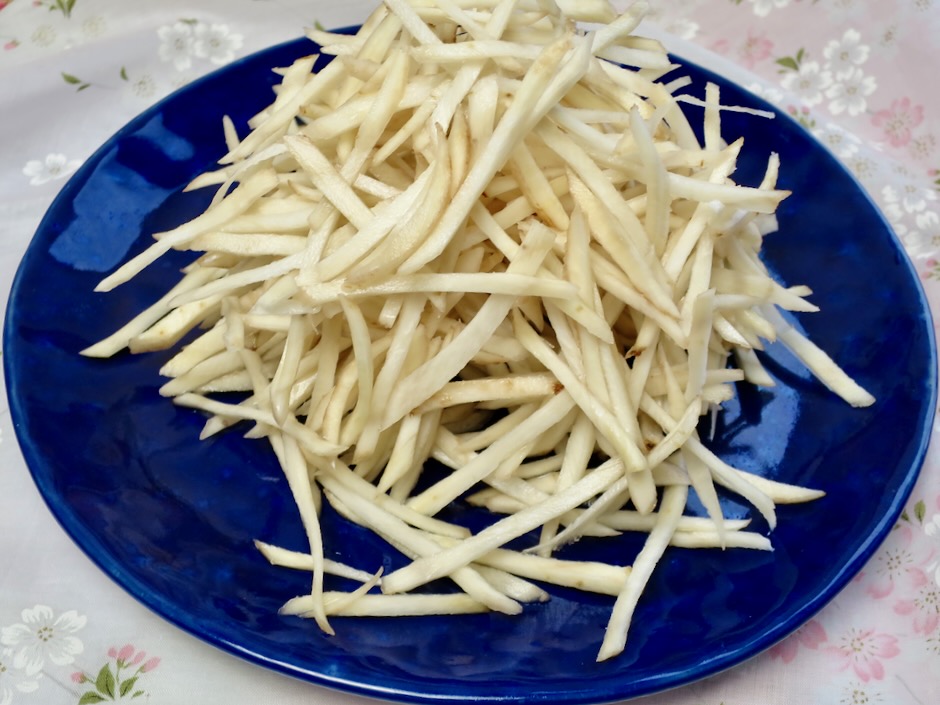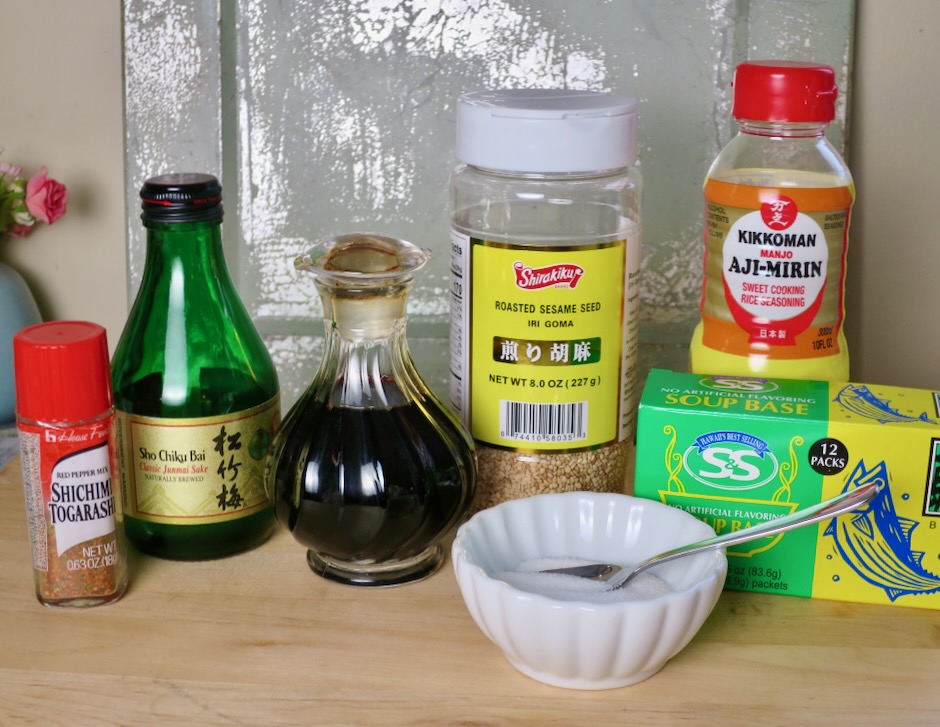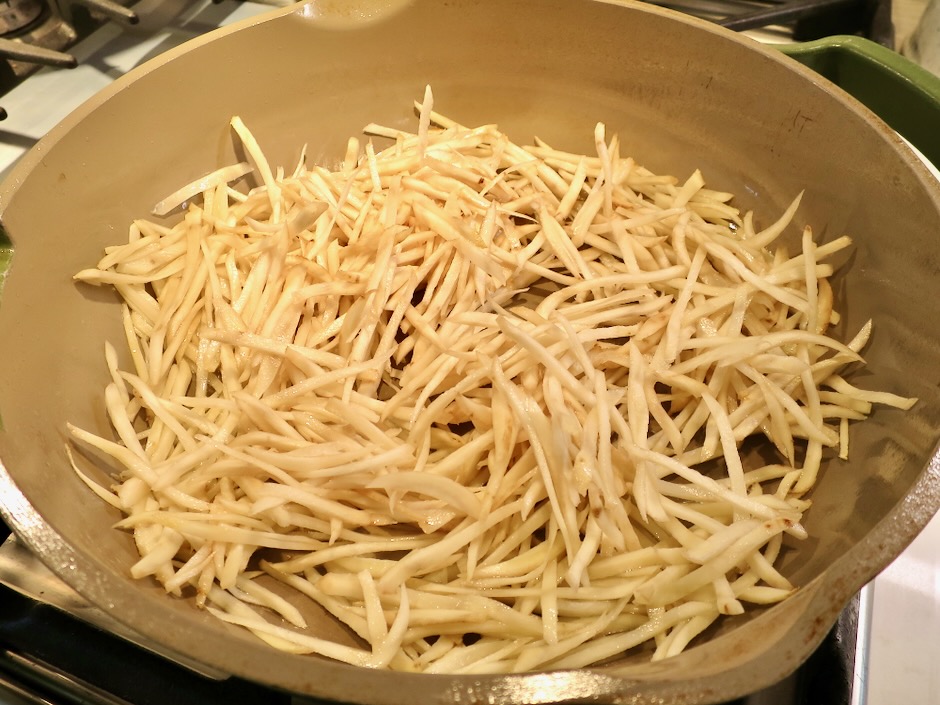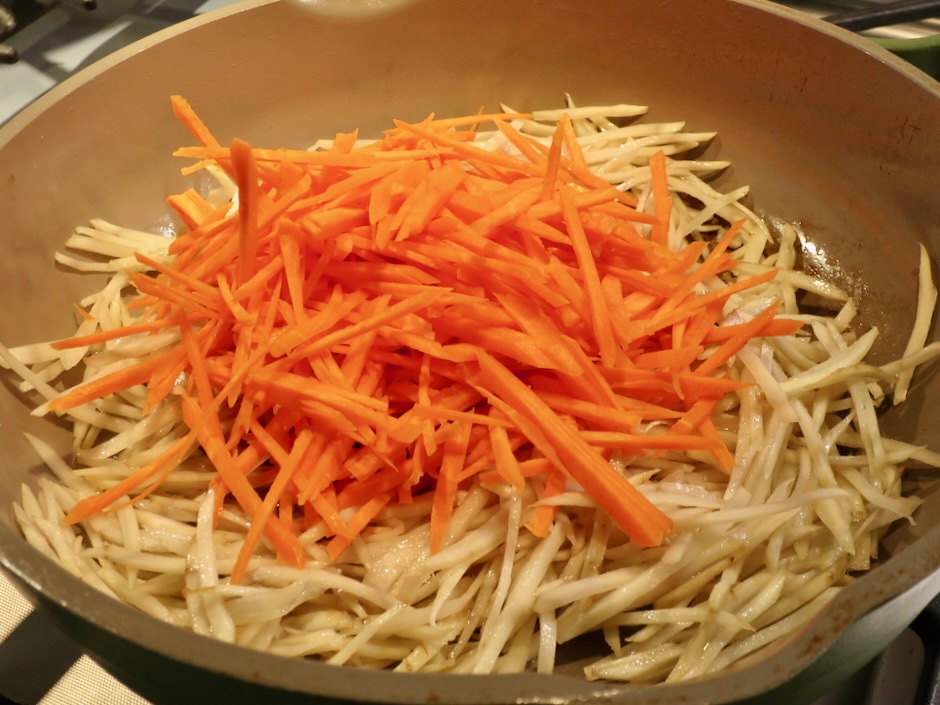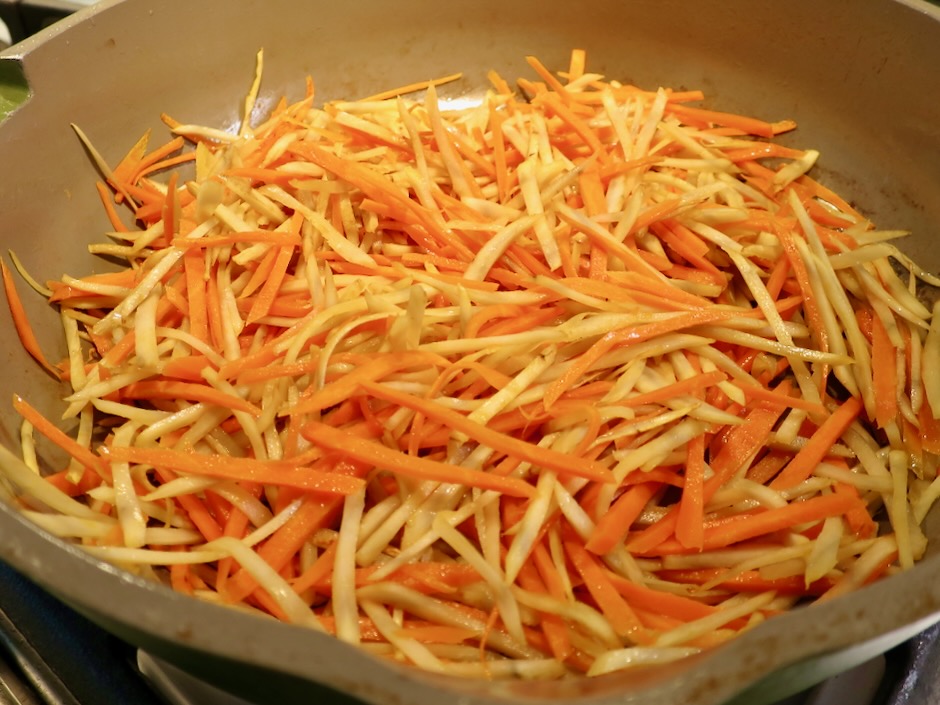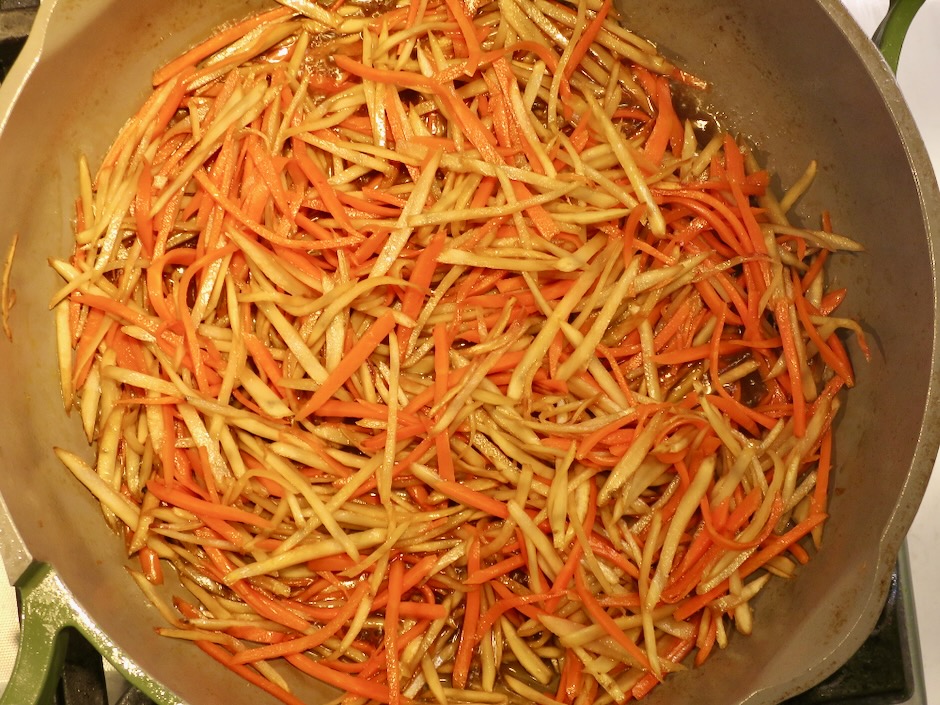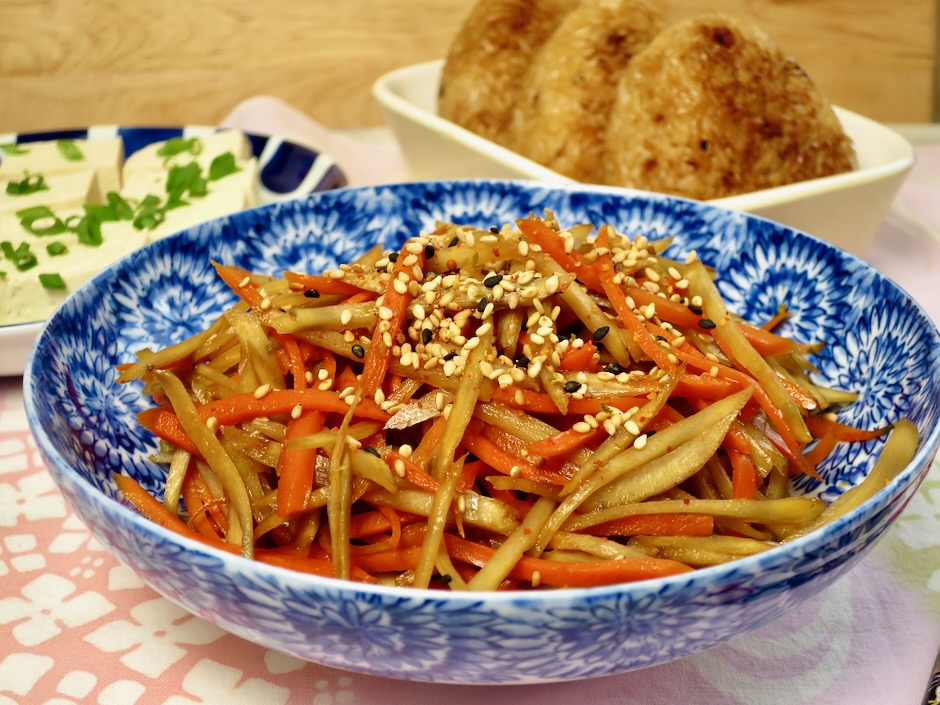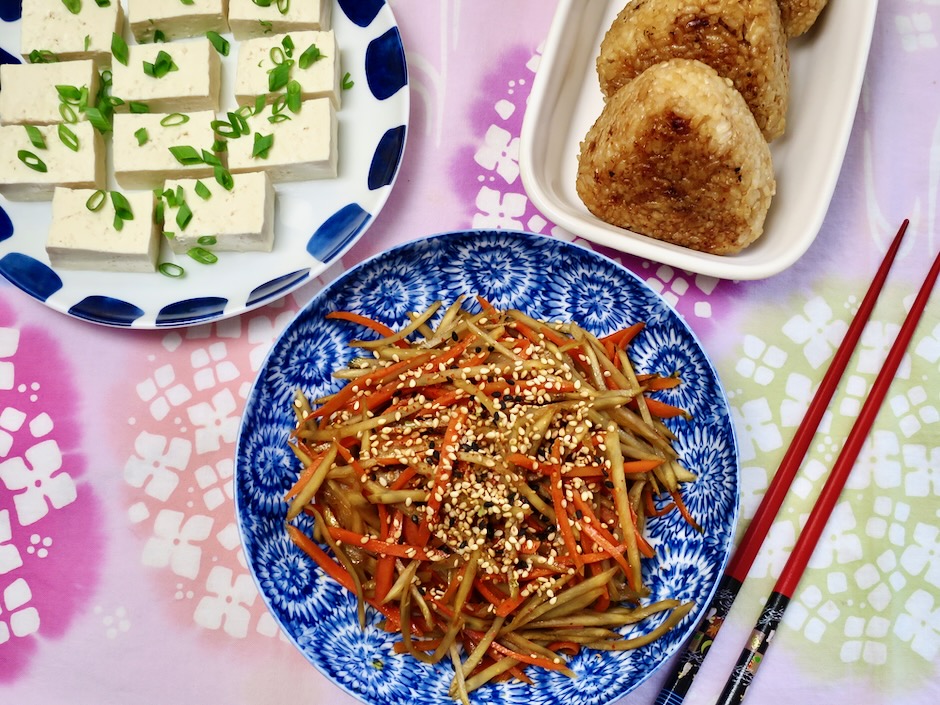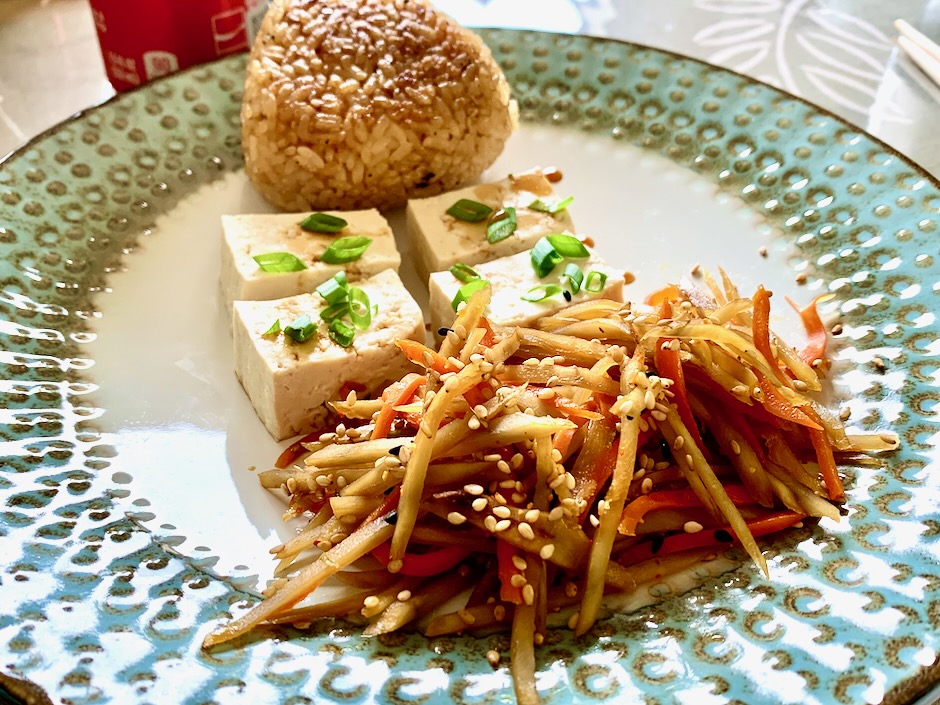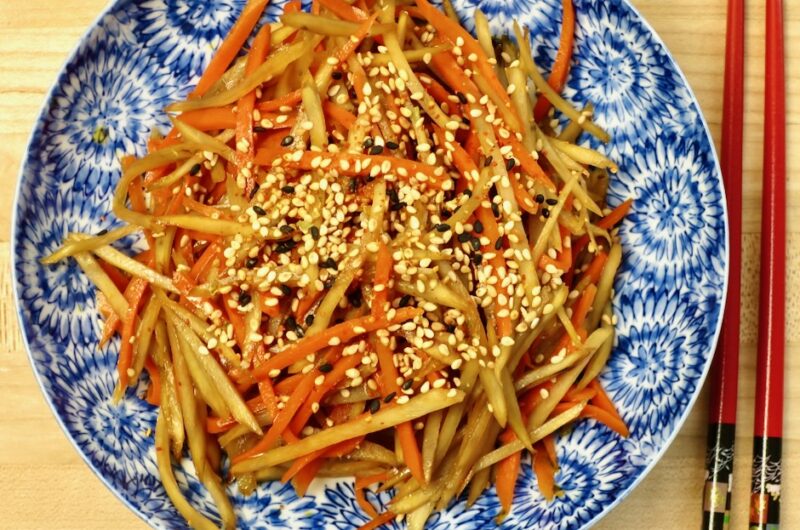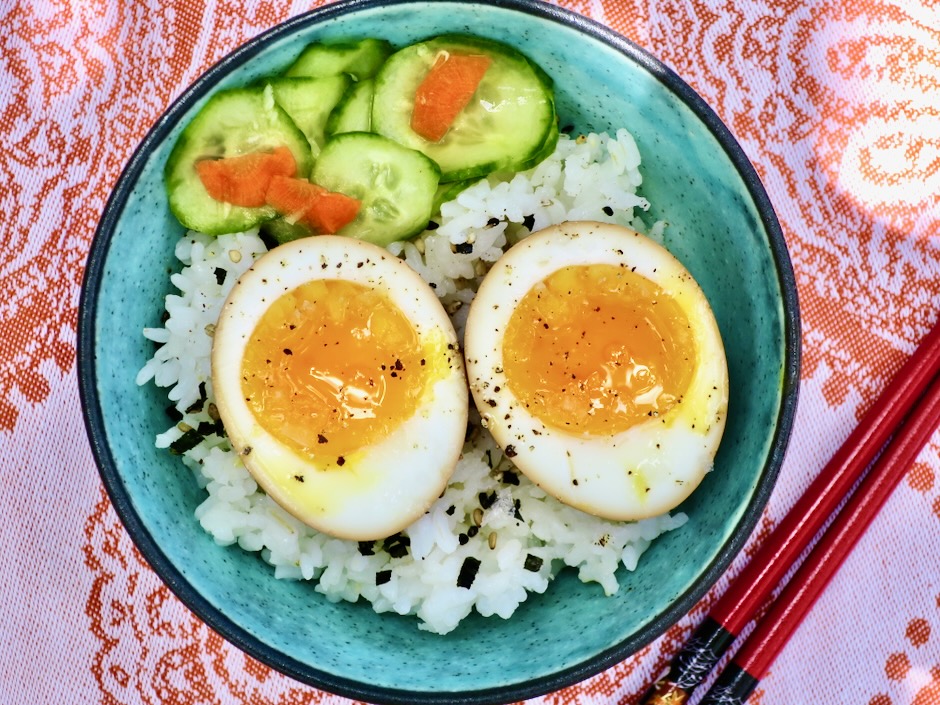
One thing is for sure, I will never get bored with eating eggs. The humble egg is versatile, nutritious, and so tasty. One of my favorite egg preparations is this easy soy sauce recipe. They can be eaten as a snack, in ramen, on rice, on toast with smashed avocado or in a salad. Marinating eggs in a simple sauce for just a few hours transforms them into a delectable treat.
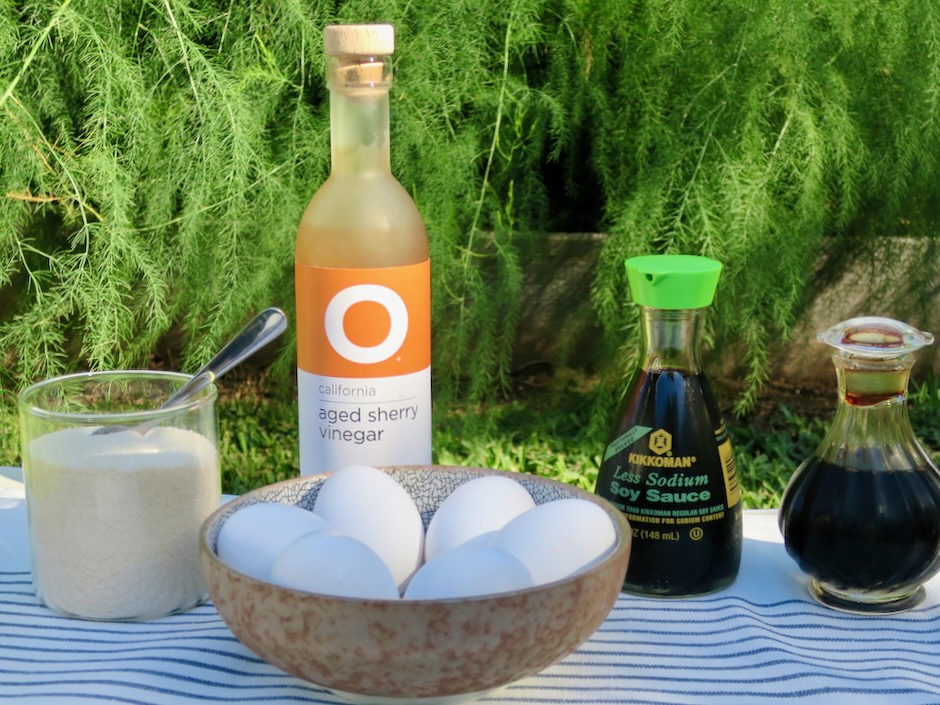
Momofuku’s soy sauce egg recipe calls for sherry vinegar which has a smooth and toasty flavor. A reliable brand is O California which can be found at Safeway and Whole Foods here on Maui. Vinegar lasts more or less indefinitely so it is a good investment. If you are unable to locate sherry vinegar you can substitute it with unseasoned rice vinegar.
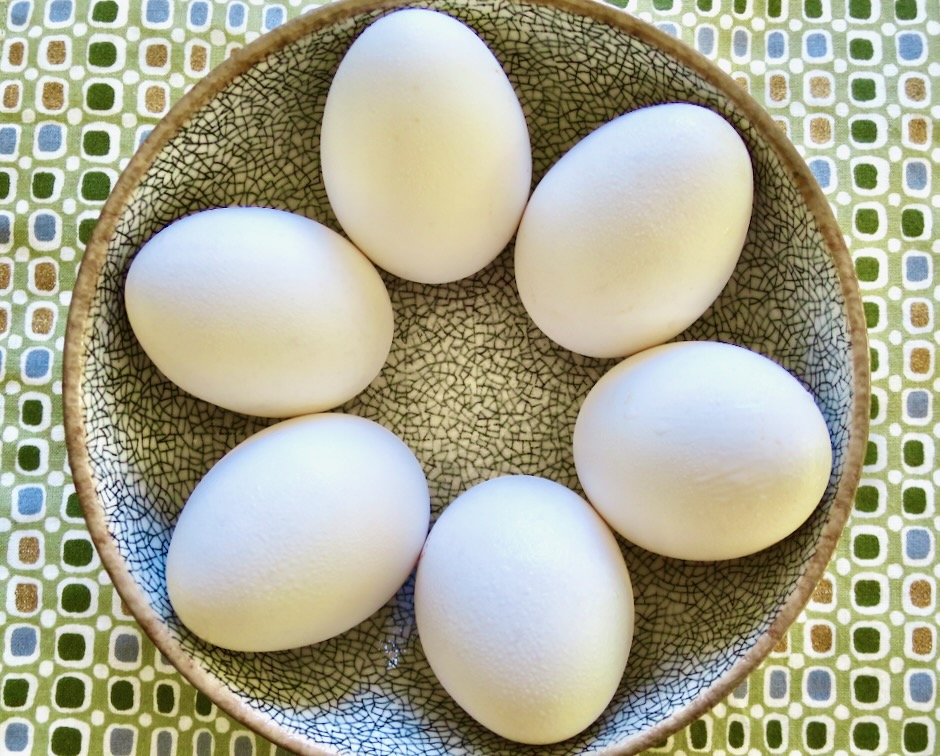
Egg yolks vary in color depending on the chicken’s diet. According to an article from America’s Test Kitchen, a paler yolk has the same nutritional value as one with a darker color. With that being said, I’m always delighted when I crack an egg open that has a vibrant yellow-orange color. For soy sauce eggs, you definitely want yolks with a deeper color. Ka Lei Eggs (Hawaii) are a good choice.
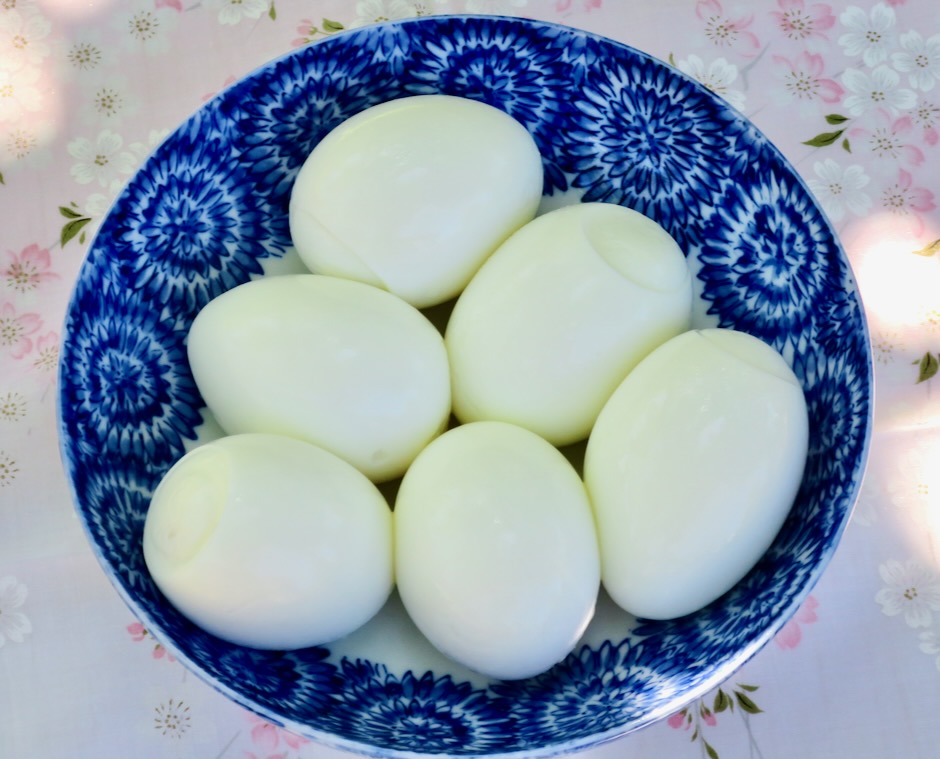
You’ll want to have a timer handy when boiling the eggs. To ensure your eggs have that velvety, jammy texture they need to be boiled for exactly 6 minutes and 50 seconds. Once the timer goes off the eggs will immediately go into an ice bath to stop from cooking any further.
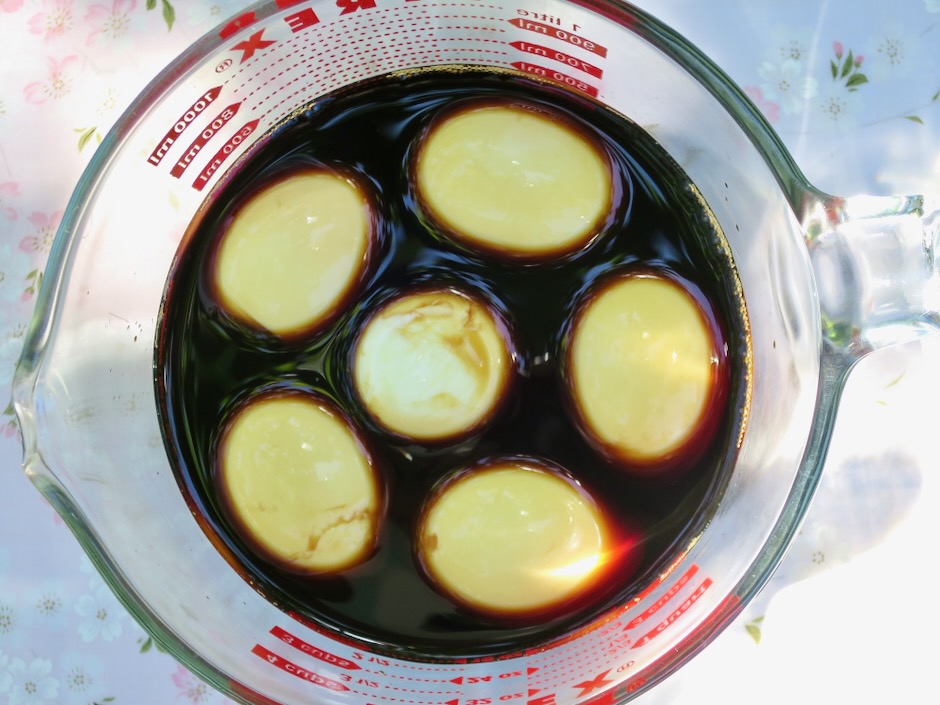
I found that using my 4-cup glass measuring cup worked perfectly for marinating the eggs. A clean paper napkin over the top helps to submerge the eggs in the umami rich sauce.
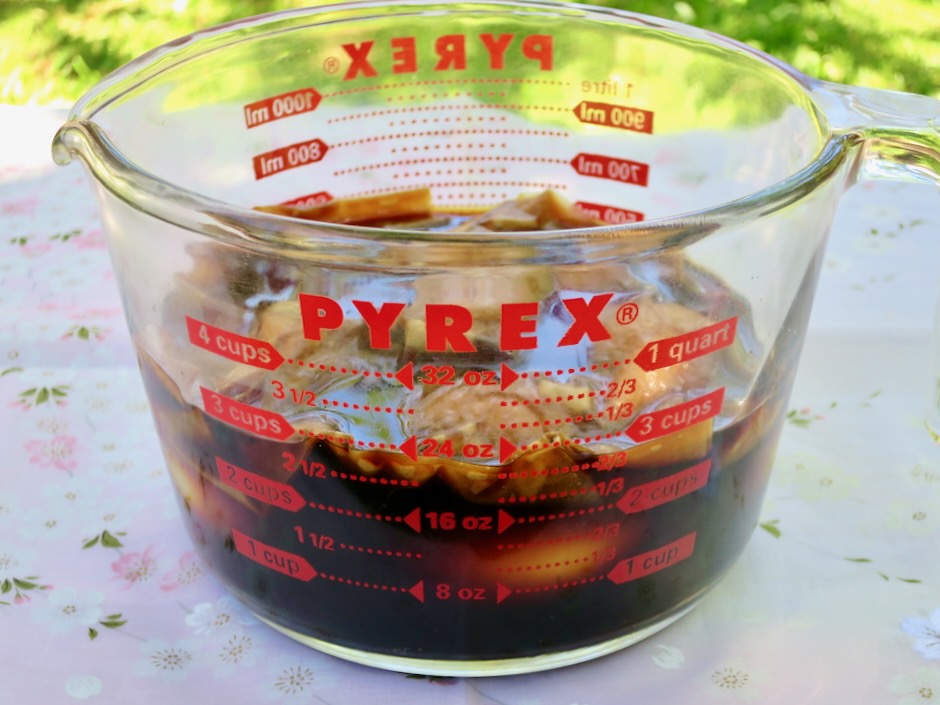
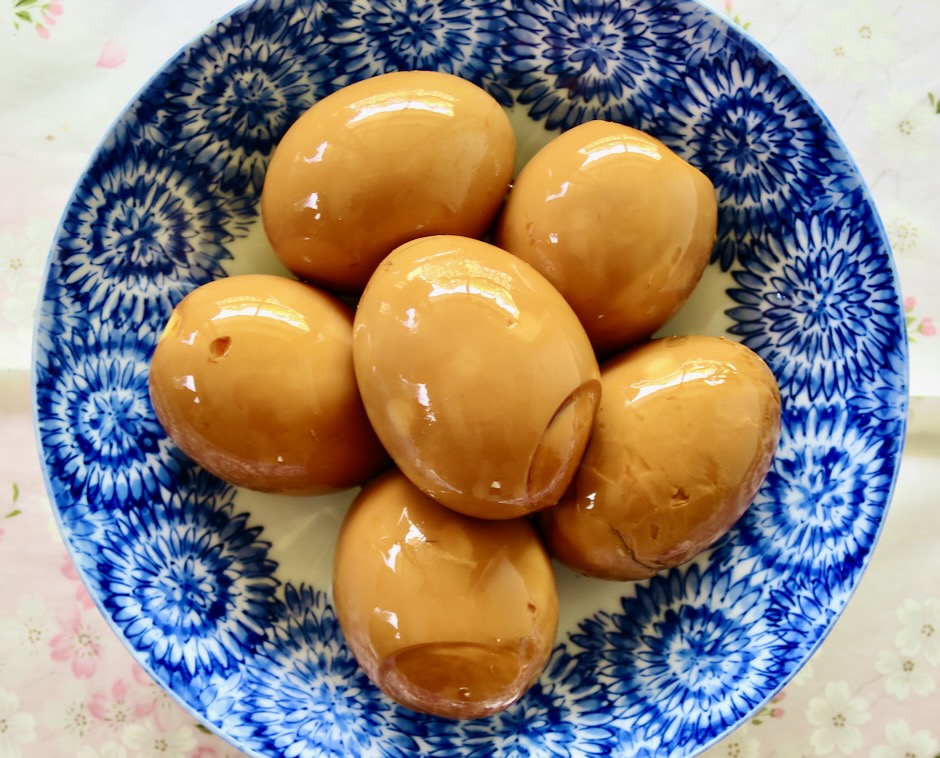
The eggs are ready to eat in just a couple of hours and can be left to marinate for up to 6 hours.
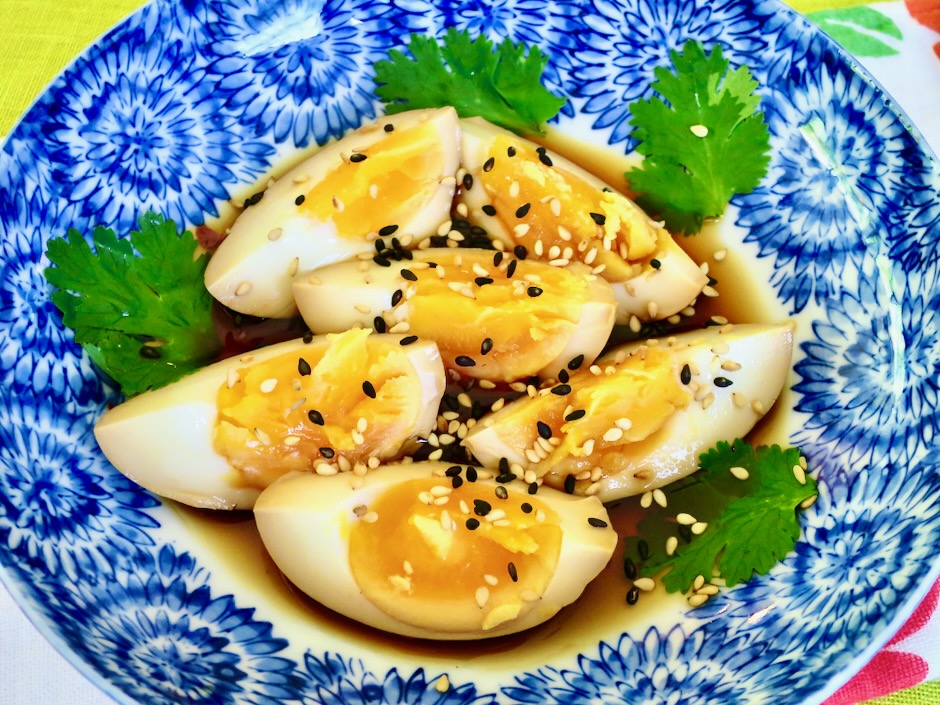
These delicious eggs can be served as an appetizer or snack.
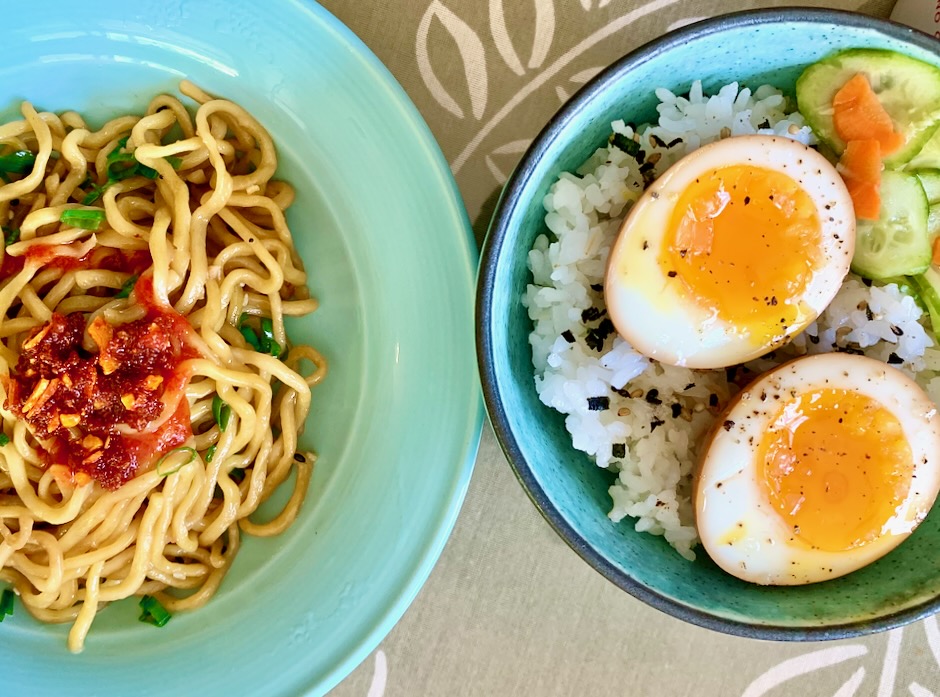
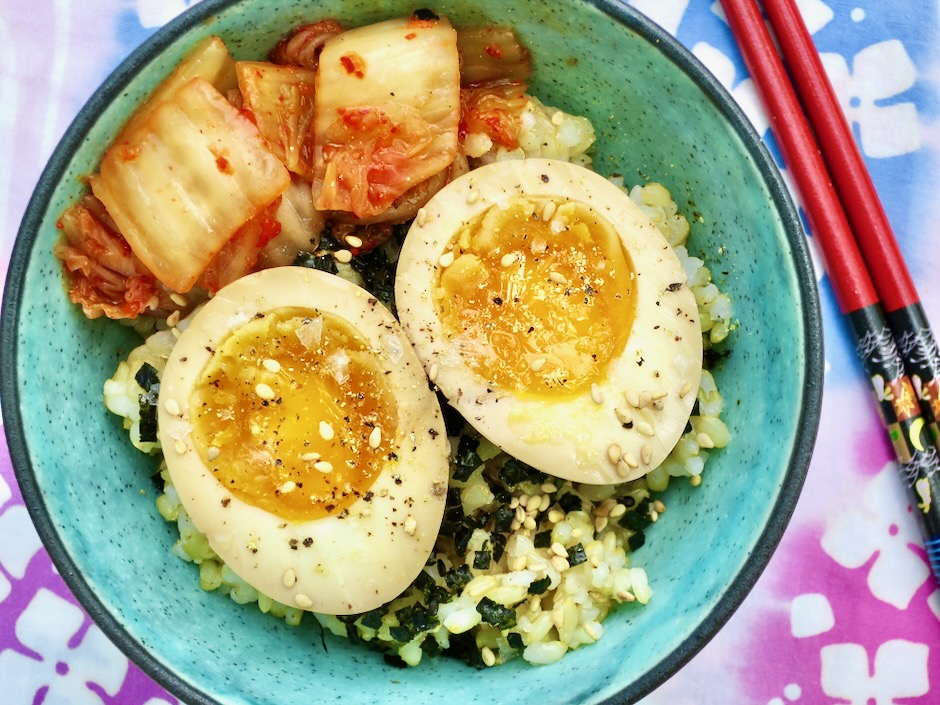
My favorite accompaniment for the eggs is a bowl of rice sprinkled with furikake and served with homemade kimchi or Japanese pickles on the side.
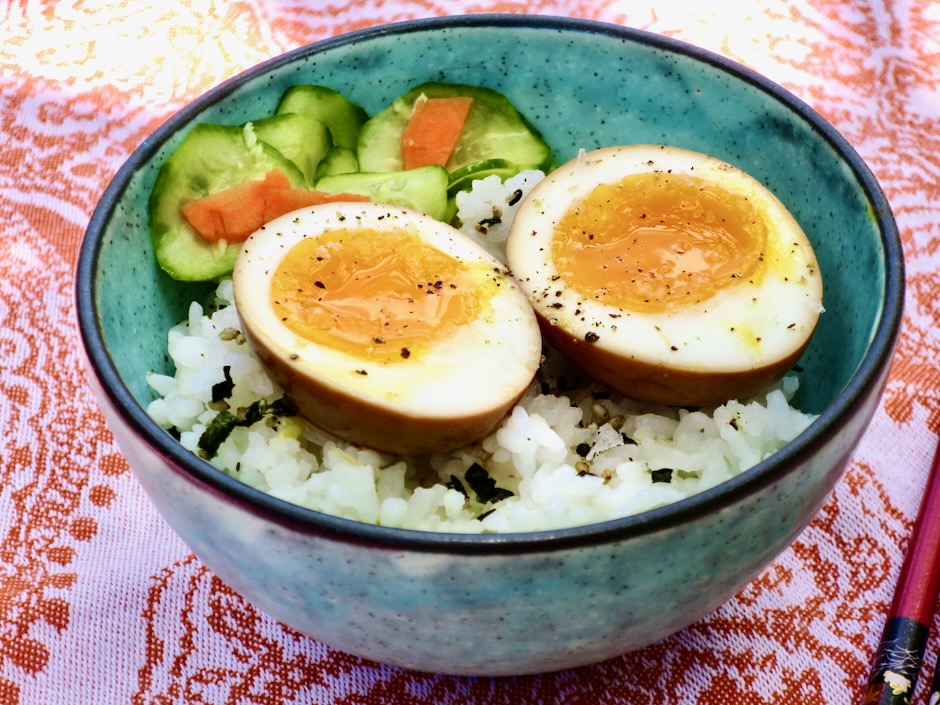
Recipe adapted from Food52
Ingredients
6 tablespoons warm water
1 tablespoon sugar
2 tablespoons sherry vinegar
1/2 cup low-sodium soy sauce
1/4 cup regular soy sauce
6 large eggs
Maldon or other flaky salt for serving
Freshly ground black pepper for serving
Directions
- In a medium bowl, whisk together the water and sugar to dissolve the sugar, then stir in the sherry vinegar and soy sauces.
- Bring a medium pot of water to a boil. Carefully place eggs into the boiling water and cook for exactly 6 minutes and 50 seconds. You may stir slowly for the first minute to distribute the heat evenly. Meanwhile, fill a large bowl with cold water and ice. When the eggs are done, transfer them to the ice bath.
- Peel the eggs once they are cool. Transfer the eggs to the soy sauce mixture and marinate in the refrigerator for at least 2 hours, and up to 6 hours, making sure they are completely submerged.
- Remove the eggs from the sauce. You can save the sauce mixture for another round of eggs if you wish.
- To serve, cut the eggs in half and season with salt and pepper. Any leftover eggs can be stored in an airtight container for 4-5 days.

